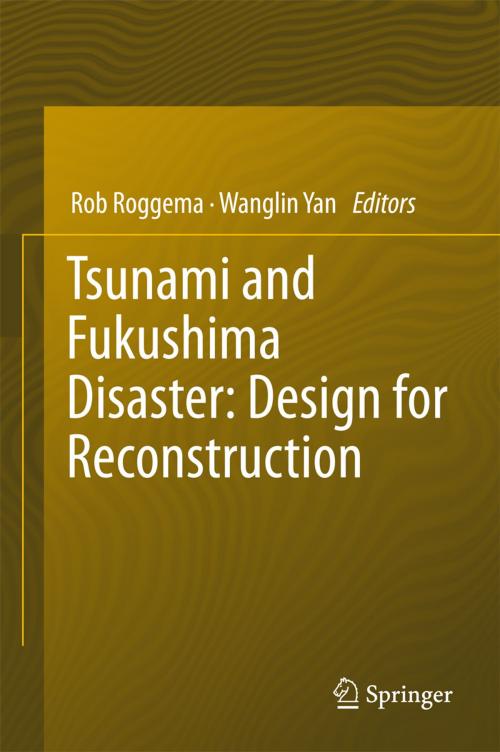Tsunami and Fukushima Disaster: Design for Reconstruction
Nonfiction, Social & Cultural Studies, Political Science, Politics, City Planning & Urban Development, Science & Nature, Science, Biological Sciences, Environmental Science, Nature| Author: | ISBN: | 9783319567426 | |
| Publisher: | Springer International Publishing | Publication: | May 17, 2017 |
| Imprint: | Springer | Language: | English |
| Author: | |
| ISBN: | 9783319567426 |
| Publisher: | Springer International Publishing |
| Publication: | May 17, 2017 |
| Imprint: | Springer |
| Language: | English |
This book consists of two parts. The first part describes the context in which the Prefectures of Minamisoma and Kesennuma need to operate and what the meaning is of the multiple disasters that occurred in the area. The second part illuminates the design process and content of the Minamisoma and Kesennuma designs. Thirdly, the chapters are alternated with reflections on the design and analyses of the disaster on specific themes: energy, demographics and economic factors, environment, water and ecology. The book ends with observations and transcripts of participants in the process, highlighting the benefits of the approach, the appraisal of the process, the appreciation of the design and the parts that could be improved. This final element will lead to recommendation how to implement these kinds of approaches in the area itself and how to spread out over the Tohuku region (the tsunami hit region) and other regions in Japan and Worldwide.
This book consists of two parts. The first part describes the context in which the Prefectures of Minamisoma and Kesennuma need to operate and what the meaning is of the multiple disasters that occurred in the area. The second part illuminates the design process and content of the Minamisoma and Kesennuma designs. Thirdly, the chapters are alternated with reflections on the design and analyses of the disaster on specific themes: energy, demographics and economic factors, environment, water and ecology. The book ends with observations and transcripts of participants in the process, highlighting the benefits of the approach, the appraisal of the process, the appreciation of the design and the parts that could be improved. This final element will lead to recommendation how to implement these kinds of approaches in the area itself and how to spread out over the Tohuku region (the tsunami hit region) and other regions in Japan and Worldwide.















